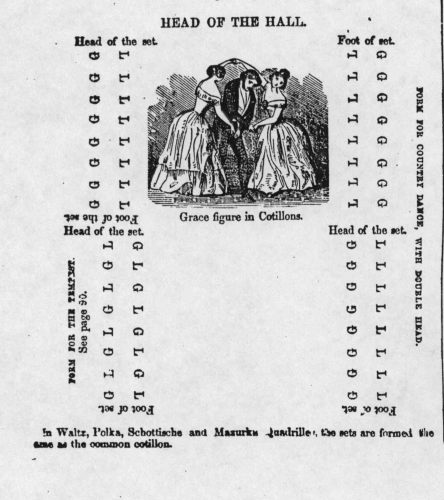
Now and again I come across resources on the web that make me wonder how it was possible to have missed them all this time. Richard Powers’ website about historical dance is one of those.
I was looking for an online translation of Domenico da Piacenza’s 15th century treatise on dance. I might as well say why, while I’m at it. It’s because in Michael Baxandall’s Painting and Experience in fifteenth century Italy, there is the most wonderful description of maniera, and definition of rhythm:
Maniera, according to Domenico, is ‘a moderate movement, not too much and not too little, but so smooth that the figure is like a gondola oared by two oars through the little waves of a calm sea, these waves rising slowly and falling quickly.’ Misura is rhythm, but flexible rhythm, ‘slowness compensated by quickness.’ (Baxandall 1988, pg. 78)
I love this so much, I wanted to find the original, see the context, and give a more detailed reference to the original work if I could. I didn’t find the translation (eventually I managed to look at one on Google Books), but I did find on Powers’ site a table, in chronological order, of nearly 1600 dance manuals from the years 1425–2000, the first being da Piacenza’s De arte saltandi et choreas ducendi. He has a private collection of 1,950 such manuals, 108 of which he has made available on his downloads page. These are not the same manuals that are available from the Library of Congress site, or others.
As it happens, I was also looking for quadrille music for a workshop (on quadrilles) that I did recently at Tring Park School for the RAD, with Nicola Gaines. Although I had plenty of quadrilles from IMSLP, I wanted to make sure I had a different set to the ones I had used last time. On Powers’ site, on the downloads page, I found Elias Howe’s 1859 Drawing Room Dances, which has several quadrilles in it, of many different types. Several other dance manuals or descriptions on the downloads page have sheet music included, so it is well worth looking here.
Also well worth reading are his teaching guidelines, especially the section on music. It is astonishing how little advice or information there is out there on using music in dance teaching. Although this isn’t specifically about ballet teaching (but about historical dance), everything he says could be usefully applied to ballet teaching. The following observation, for example, is so true, yet I have never seen it written down before:
Tempo warning: There may come the day when you think to yourself, “That music feels too fast. I think I’ll slow it down for them.” Or, “I can’t believe I’ve been teaching it that fast all of these years!” No, the music isn’t too fast; you’re just slowing down. If your class is comprised of younger people, don’t slow the class down to a tempo which works for an older teacher.
Also well worth reading is his “How to be a better dance DJ“—by which he means selecting and putting on music for social dances. But a lot of what he says is applicable to teachers selecting music for ballet classes, or for pianists preparing music for them.
Powers is wonderfully generous with his resources, and for my taste, represents the best of the web—it makes me feel a little nostalgic for the early days (I’m talking 20 years ago) when people saw the web as an opportunity to share, rather than monetize.
References


As always – fascinating!❤️